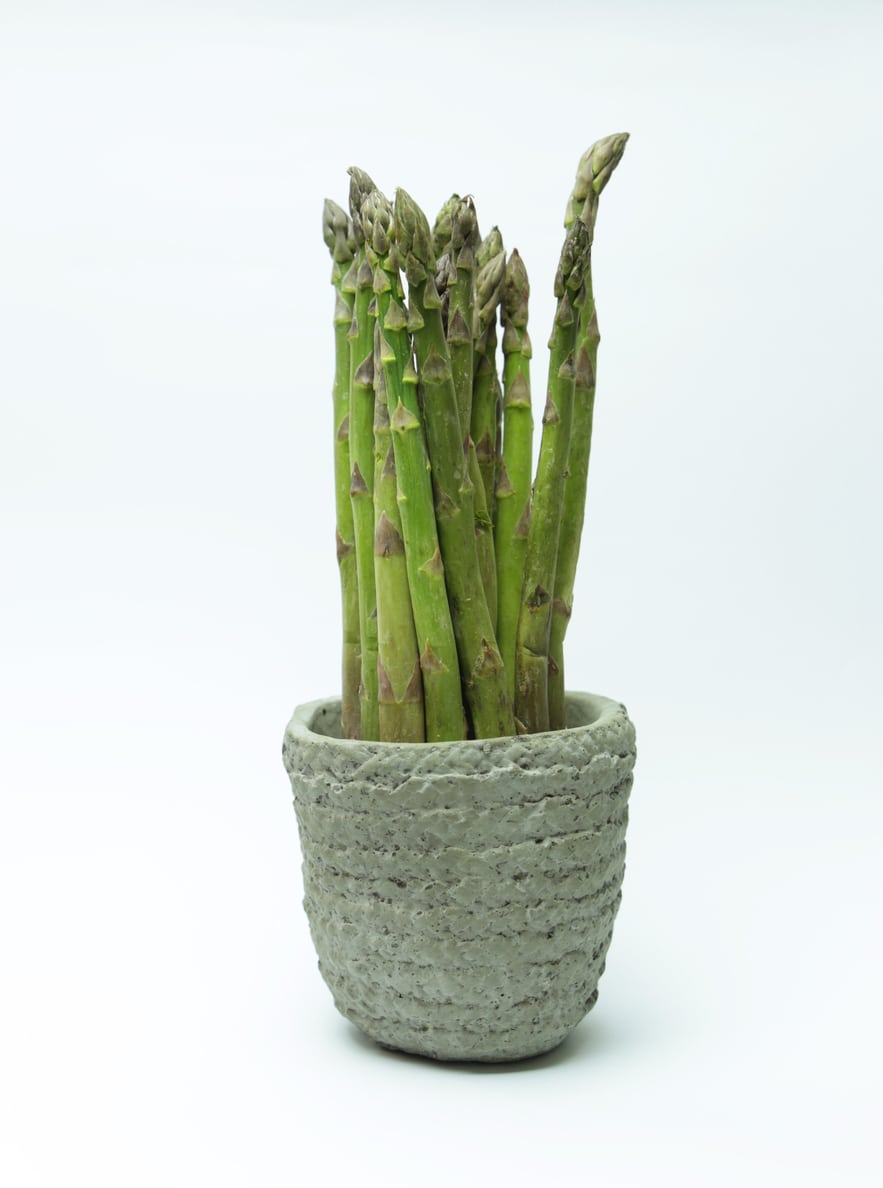Potted Asparagus Plants – Can You Grow Asparagus In Containers


Asparagus is a hardy, perennial crop that serves as a wonderful addition to formal kitchen gardens as well as permaculture food forests. Once plants have become established, gardeners can expect yearly crops of tender asparagus shoots. The introduction of new cultivars has made the process of growing and caring for these plants easier than ever before. Can you grow asparagus in a pot though? Read on to learn more about container grown asparagus plants.
Potted Asparagus Plants
Ideally, asparagus plants are grown outside in garden soil in USDA zones 4 through 8. Thriving in deeply cultivated and consistently moist soils, growers can expect to harvest from plants for upwards of twenty years. Ample garden space is key to growing healthy asparagus, as the plant’s root system can grow quite large.
Fortunately, for those of us growing in tight spaces, there is another option. Whether gardening on a small apartment balcony or simply not in the position to plant long-term perennials, asparagus may also be grown in containers. When planting asparagus in a pot, however, there are a few considerations one must take into account.
Asparagus plants are quite slow-growing when compared to other kitchen garden plants. When grown from seed, the plants will require at least two to three years to become established. During this period, the plant should not be harvested. This long waiting period is the main reason that many gardeners choose to purchase plants in the form of asparagus crowns.
Simply, crowns are plants that have already been grown for one to two years. Therefore, decreasing the waiting period between planting and harvest. Though growing asparagus in containers is beneficial as a space-saving technique, it will negatively impact the life span of the plants.
When growing asparagus in a planter, gardeners can expect only two to four seasons of actual asparagus harvests after the establishment period has passed.
Growing Asparagus in a Planter
In the early spring, select a container. For each crown, choose a large container at least 18 inches (46 cm.) deep and 12 inches (31 cm.) across. Planting in larger containers is essential, as asparagus crowns must be planted deeply. Create drainage holes in the bottom of the pot if none are present.
Sign up for the Gardening Know How newsletter today and receive a free copy of our e-book "How to Grow Delicious Tomatoes".
While most planters will already have drainage holes, many gardeners choose to add additional drainage to pots. This will help to prevent the growth of fungus, as well as root rot. Fill the bottom 2 inches (5 cm.) of the pot with gravel.
Then, fill the remainder with a mix of high quality potting soil and compost. Plant the asparagus crown into the container by following the package instructions, most often, planting the crown about 4 to 6 inches (10-15 cm.) deep. Water well. Place outdoors in a sunny location that receives at least eight hours of sunlight each day.
After planting, shoots should appear within a week. Allow the plants to grow and become established during the first two seasons. Mulching around the plants will ensure that there is no competition from weeds and that the soil remains adequately moist.
Since these perennials are hardy, leave the containers outdoors throughout the fall and winter. Dormant plants will resume growth in the spring when the weather begins to warm.

Tonya Barnett has been gardening for 13 years. Flowers are her passion. She has transformed her backyard into a cut flower garden, which she regularly chronicles on her YouTube channel http://www.youtube.com/@tonyawiththeflowers.